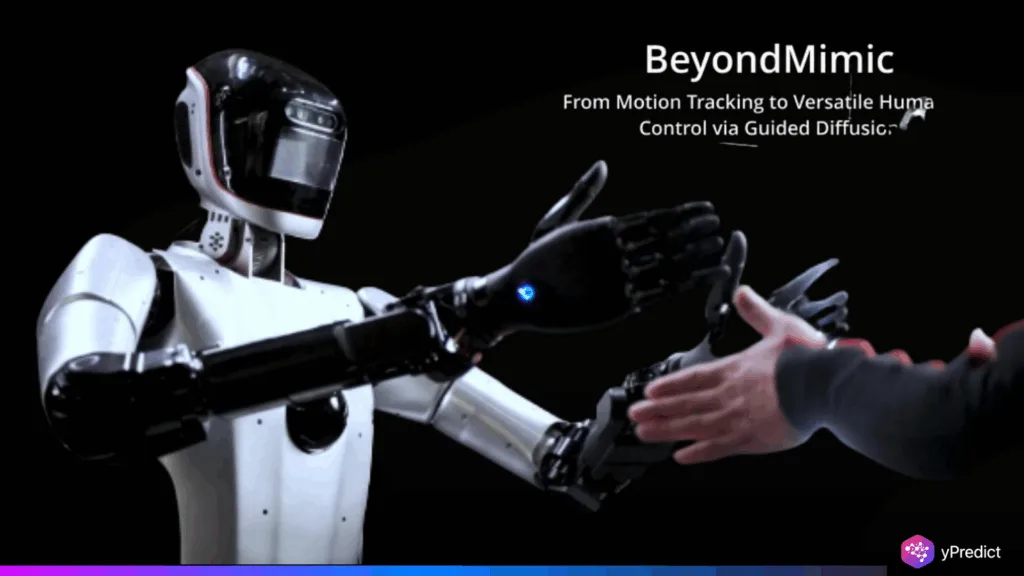
The UC Berkeley BeyondMimic project represents a step change in humanoid robotics, demonstrating how human motion capture can be integrated into a powerful control policy for a robot. The focal point of this development is the Unitree G1 humanoid, which is now able to perform complex actions like cartwheels, jump spins, and sprints without retraining, a process known as zero-shot control. BeyondMimic does not use more complex cost functions such as those found in traditional motion systems; subsequently, the behavior of the robot is efficient and flexible. The study puts BeyondMimic in an era of connecting human-like motion with scaled robotic implementation in real-world applications.
Motion and Control
BeyondMimic stands out for its ability to translate long sequences of human motion capture into robust robot behavior. Instead of replicating rigid, global positions, the system emphasizes relative poses, anchoring control to the torso while tracking selected body parts. This design choice preserves the fluidity and intent of human motion, even when environmental variations shift the robot’s overall position. The result is stability without sacrificing style, a hallmark of BeyondMimic’s design.
The policy distilled from this process allows the Unitree G1 to repeat dynamic maneuvers such as multiple cartwheels in succession, maintaining consistency and natural motion quality. This will make it appear more like a human than a mechanical robot, which is important as a prerequisite to acceptance in a setting where people’s interactions are important. Combining robustness and naturalism, BeyondMimic offers humanoid robots a basis that not only endows efficient movement but also persuasively imitates the manner of human movement. The older systems needed to be trained in a new ability, something that BeyondMimic allows them to stay away, making real-life adaptation more feasible and scalable. BeyondMimic demonstrates the way forward in the use of generative models and imitation learning to effectively combine them to reach human-level expressiveness in robot control.
Applications and Implications
The flexibility of BeyondMimic becomes clear when examining its performance across diverse tasks. At test time, the Unitree G1 successfully navigates waypoints, responds to joystick teleoperation, and avoids obstacles—all while retaining human-like style in its movements. This adaptability comes from the diffusion policy at the project’s core, which interprets simple cost functions into highly coordinated actions. Unlike older methods, which struggled with multimodal action distributions, BeyondMimic uses stochastic Langevin dynamics to maintain stability in high-dimensional action spaces, essential for humanoid robots.
The research also integrates receding horizon control and visual conditioning, giving the robot the ability to adapt to dynamic, unpredictable conditions. This makes BeyondMimic particularly promising for real-world deployment, where robots must handle variability without constant recalibration. Applications range from assistance in healthcare and service industries to roles in search, rescue, and entertainment. By reducing retraining demands, BeyondMimic significantly lowers the time and cost of introducing robots into new environments. It is not just a robotics experiment but a scalable framework that shows how generative diffusion models can reshape the future of motion control. Its versatility signals a step toward humanoid robots capable of performing complex roles with agility and human-like presence.
Outlook
BeyondMimic establishes a new benchmark for humanoid robotics by combining imitation learning, generative diffusion models, and robust control systems. The project demonstrates that a single motion pipeline, trained on human capture data, can yield robots that adapt naturally across tasks without retraining. This advancement suggests a future where humanoid robots move with a human-like style while handling real-world complexity. With its scalable design and focus on adaptability, BeyondMimic opens the door to robots that can operate seamlessly in dynamic settings. As development continues, BeyondMimic could define the standard for next-generation robotics, blending agility, efficiency, and natural motion.






